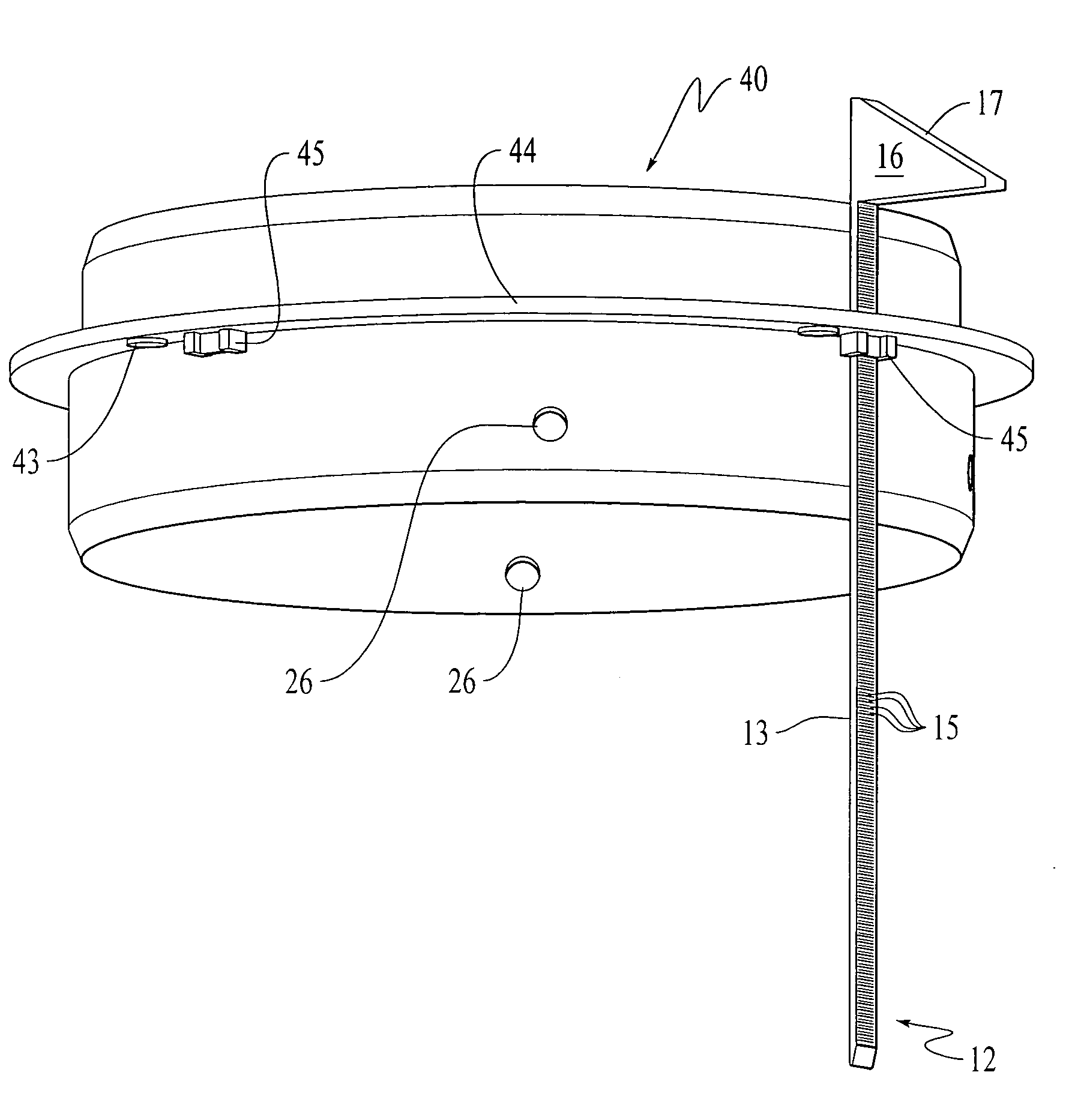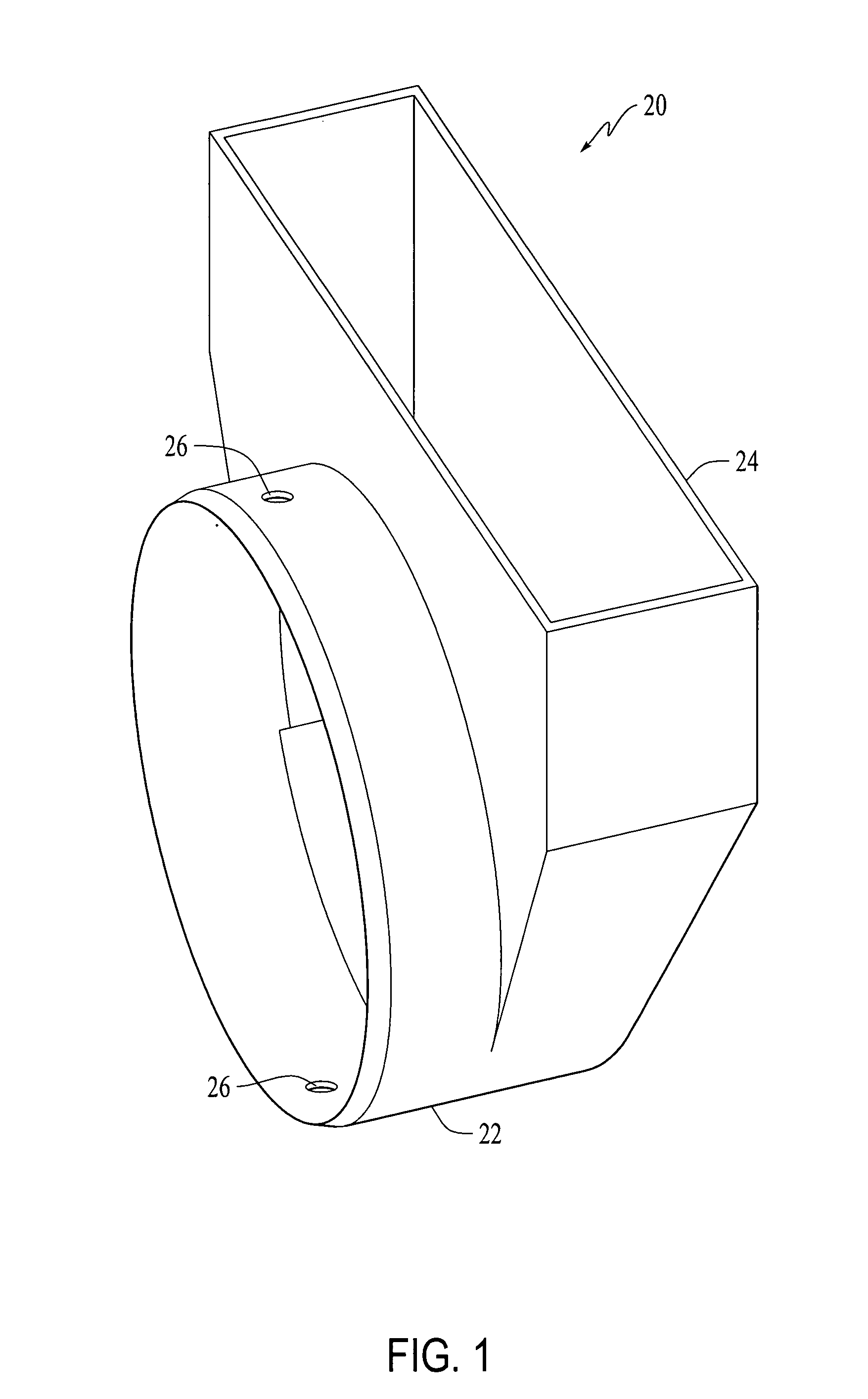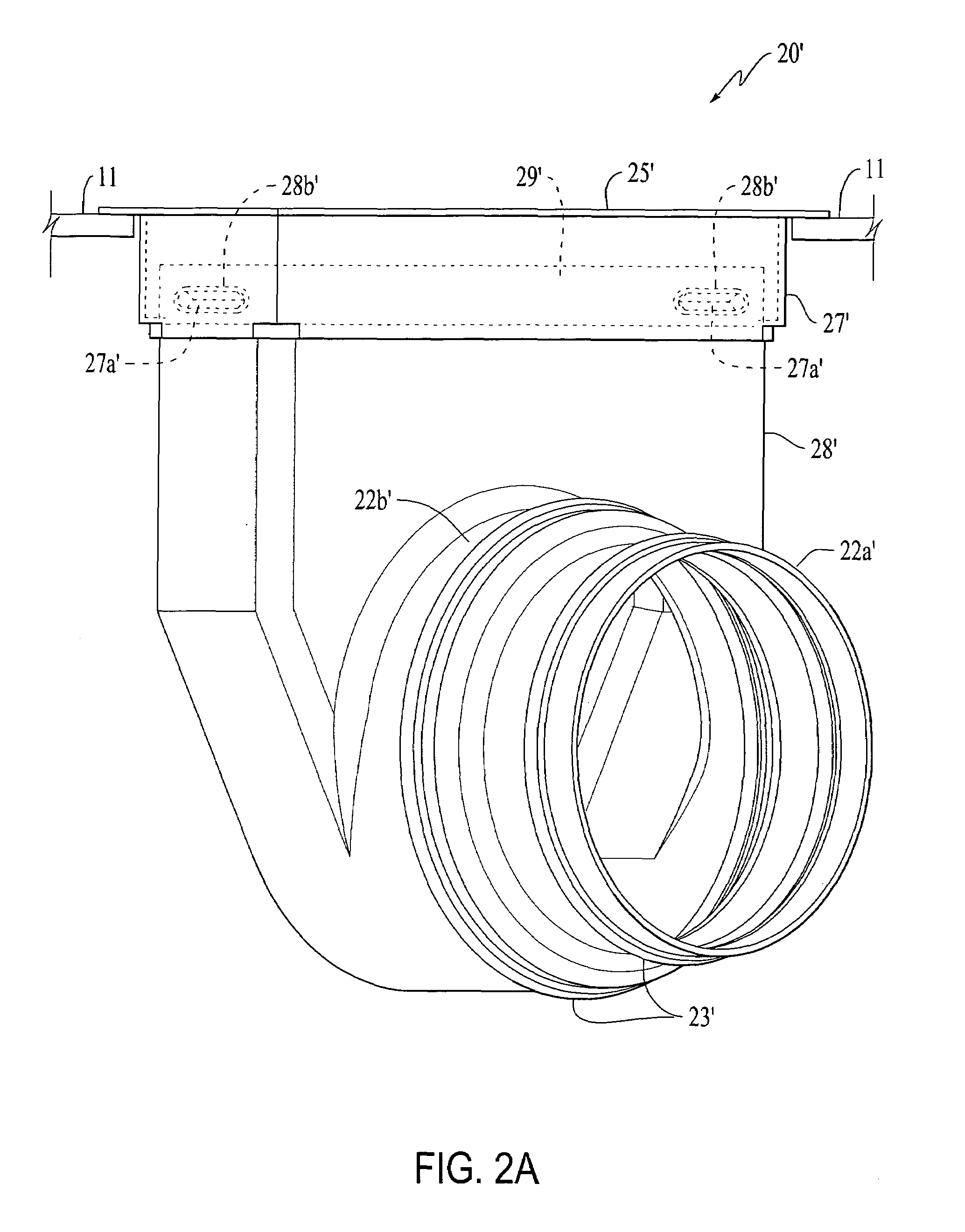Plastic heating duct connectors
a technology of plastic heating ducts and connectors, which is applied in the direction of hose connections, heating types, lighting and heating apparatus, etc., can solve the problems of metal ducts losing a considerable amount of heat to an uninsulated air space, razor sharp ends, etc., and achieves the improvement of duct performance, poor conductors, and the effect of overcoming metal duct deficiencies
- Summary
- Abstract
- Description
- Claims
- Application Information
AI Technical Summary
Benefits of technology
Problems solved by technology
Method used
Image
Examples
first embodiment
[0018]a plastic boot which forms a part of the present invention is shown in FIG. 1 generally at 20. Boot 20 is made as a one-piece injection molded plastic. The plastic used to make any of the embodiments shown herein is selected from the group consisting of acrylonitrile butadiene styrene (ABS), polyvinyl chloride (PVC), liquid crystal polymer (LCP) resin and polyphenylene sulfide (PPS), polypropylene (PP) and polyethylene (PE). Boot 20 has a cylindrical collar 22 and a rectangular body portion 24 which will engage a floor mounted exhaust grate or a rectangular extension which connects to such a grate. A plurality of holes 26 in collar 22 permit screws to attach a length of duct to boot 20. Boot 20 can be used with metal duct or flex duct.
second embodiment
[0019]plastic boot is shown in FIGS. 2A and 2B generally at 20′. Plastic boot 20′ is formed with two collars 22a′ and 22b′ which can accommodate different diameter ducts (not shown). Plastic boot 20′, and in fact, each of the embodiments depicted herein, can be used with any type of duct including, but not limited to, metal duct and flex duct. In this embodiment, collars 22a′ and 22b′ are each formed with an annular ridge 23′ which is inserted into the duct which attaches thereto and functions as frictional securing means therefor. If used with flex duct, a hose clamp can be used outside the ridge 23′ to provide improved sealing. A rectangular fitting 25′ is mounted above a floor 11 with a sleeve 29′ which extends through the floor 11. Sides 27′ each have a rectangular protrusion 27a′ which snap into rectangular recesses 28b′ in rectangular upper portion 28′ of boot 20′ to secure the two members together.
[0020]FIG. 3 depicts a first embodiment of a boot adapter generally at 30. Adap...
PUM
 Login to View More
Login to View More Abstract
Description
Claims
Application Information
 Login to View More
Login to View More - R&D
- Intellectual Property
- Life Sciences
- Materials
- Tech Scout
- Unparalleled Data Quality
- Higher Quality Content
- 60% Fewer Hallucinations
Browse by: Latest US Patents, China's latest patents, Technical Efficacy Thesaurus, Application Domain, Technology Topic, Popular Technical Reports.
© 2025 PatSnap. All rights reserved.Legal|Privacy policy|Modern Slavery Act Transparency Statement|Sitemap|About US| Contact US: help@patsnap.com



